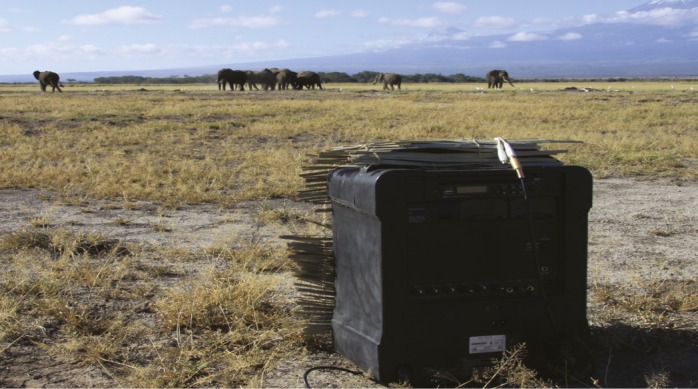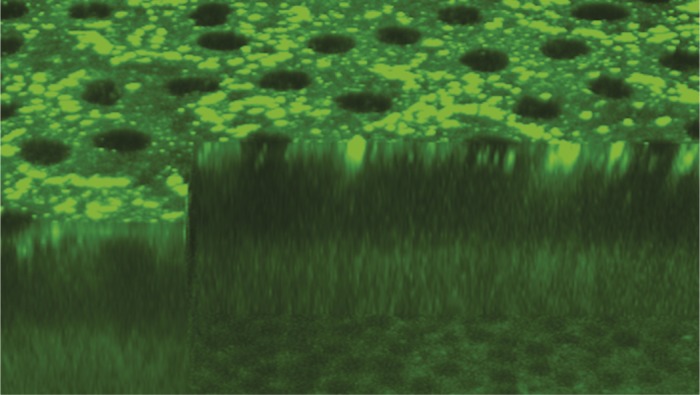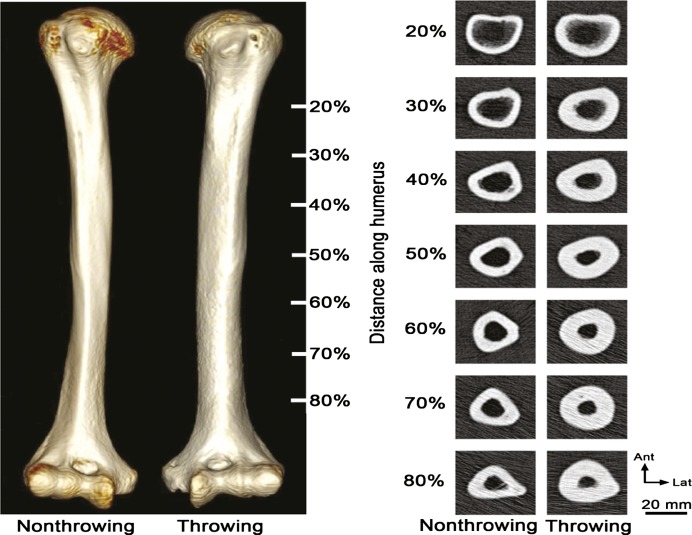Genome sequences illuminate pepper evolution, domestication

General fruit variability within peppers (Capsicum annuum L.).
Domesticated by Native Americans around 6000 BC, peppers represent a commercially important food, medicinal, and ornamental crop, with 34.6 million tons of fresh fruit harvested worldwide in 2011. Yet the molecular mechanisms underlying pepper fruit size, shape, and yield remain unclear. Cheng Qin et al. (pp. 5135–5140) generated reference genome sequences for the cultivated pepper Zunla-1 (Capsicum annuum L.), grown in China’s Guizhou Province, and its wild progenitor Chiltepin (C. annuum var. glabriusculum), grown in northcentral Mexico. The authors report that greater than 81% of the 3.26 Gb-sized pepper genome is composed of mobile genetic elements called transposons, the genomic insertion of which likely occurred around 0.3 million years ago, leading to recent genome expansion in the pepper family’s evolutionary history. Phylogenetic analysis suggested that peppers likely diverged from potatoes and tomatoes—peppers’ kin—around 36 million years ago. In addition, the authors scanned the genomes of 18 major cultivated pepper varieties for signs of artificial selection, and identified putative domestication-related genes, which might explain differences between wild and cultivated peppers; among the genes were those potentially linked to shortened seed dormancy, enhanced pathogen and stress resistance, and increased shelf life. Further, the authors identified pepper-specific gene duplications and a gene-dosage compensation mechanism linked to the buildup of capsaicinoids, which lend some pepper varieties their pungency. According to the authors, the genome sequences might help improve the effectiveness of pepper breeding programs. — P.N.
Technique “humanizes” mouse genes with speed and precision
To create so-called “humanized” laboratory mice, targeted mouse genes are substituted with the corresponding human orthologous sequences. Although this approach can help create animal models for studying human diseases, humanization is impeded by the challenge of replacing a mouse gene with its human counterpart at the same genetic location. Lynn Macdonald et al. (pp. 5147–5152) present an alternative approach that introduces large compound bacterial artificial chromosome-based targeting vectors into mouse embryonic stem (ES) cells to precisely replace large regions in situ. The authors show that this approach, known as VelociGene technology, can achieve large targeted deletions and replacements at specific genomic locations in ES cells. The authors humanized 6 Mb segments, three each in mouse heavy and kappa light chain immunoglobulin loci, at rates exceeding 200 kb in a single step. The results offer a substantial improvement over current methods that require substituting for an endogenous mouse gene at a new, random location, according to the authors. In a related study, the authors (pp. 5153–5158) used the same technique to precisely replace 6 Mb of mouse immune genes with their human counterparts, conducted trials with the test animals, and found that the mice efficiently produced human:mouse hybrid antibodies and possessed a functional humoral immune system indistinguishable from wild-type mice. In addition to demonstrating the efficiency of the approach, the findings have generated more than a dozen therapeutic candidates that have progressed into clinical trials for a variety of diseases, according to the authors. — T.J.
Long-term benefits of physical activity to bone size and strength
Professional baseball player humerii are bigger and stronger in the throwing arm than in the nonthrowing arm.
Bone mass, size, and strength increase in response to physical activity when young, but whether these benefits of physical activity persist throughout adulthood is unclear. Stuart Warden et al. (pp. 5337–5342) compared humerus mass, size, and strength in the throwing and nonthrowing arms of 103 professional baseball players during their careers and after retirement. The authors report that working baseball players displayed greater humerus mass, size, and strength in their throwing arms than in their nonthrowing arms, with bone strength twice as high in the throwing arm. After retirement, players who stopped throwing eventually lost all of the bone mass benefits in their throwing arms as they aged. In contrast, retired players who remained active retained 28% of the bone mass benefit. Inactive players in their 80s retained 56% of the bone size and 34% of the bone strength benefits in their throwing arms that they had built when young, despite not throwing for more than 50 years. Bone strength benefit retention in active retirees rose to 50%. According to the authors, the results suggest that exercise at a young age increases bone mass, size, and strength, and that the improved bone size and strength might be retained well into late adulthood, despite lack of exercise. — J.J.
Optogenetic tool sheds light on fruit fly social behavior
Social interactions are crucial for fulfilling functions such as attracting a mate. But relatively little is known about the neural circuits underlying the ability to learn and form memories based on social interactions, in part due to the lack of effective techniques for controlling the behavior and neural activity of animals in social situations. Ming-Chin Wu et al. (pp. 5367–5372) developed an automated laser tracking and optogenetic manipulation system (ALTOMS) for studying social memory in freely moving fruit flies. ALTOMS used online image analysis to compute the locations of a male fly and a female fly in the same enclosure and used a laser to repeatedly irradiate the male’s abdomen as a form of heat punishment every time the male came close to the female. The authors report that laser-targeted males quickly learned to avoid females, whereas nonirradiated males often stayed close to females. Moreover, different lasers targeting the head or thorax can increase or inhibit the activity of specific neurons genetically manipulated to express light-responsive proteins called channelrhodopsin-2 (ChR2) or halorhodopsin. When ALTOMS activated ChR2-expressing neurons involved in pain perception to punish males for approaching females, the targeted males learned to avoid the females. According to the authors, ALTOMS can enable researchers to systematically map social memory circuits in the fruit fly brain. — J.W.
Elephants can distinguish vocal characteristics of threatening humans

Setup for playback of vocal recordings.
The cattle-herding Maasai people of Kenya and Tanzania often encounter free-ranging elephants, sometimes with violent consequences. Previous studies showed that the scent of a garment worn by a Maasai man provoked a fear-based response in elephants, suggesting that the elephants view the Maasai as a threat. Karen McComb and Graeme Shannon et al. (pp. 5433–5438) collected recordings of Maasai men, women, and boys, as well as men of the Kamba people, in which they all spoke the same phrase in their first language. The authors played the recordings in the presence of wild elephant family groups in Amboseli National Park, Kenya. The authors report that elephants were more likely to engage in defensive behavior, such as bunching into a group, during playback of the Maasai men than of the agricultural, nonthreatening Kamba men. Further, the elephants were more likely to act defensively during playback of recordings of Maasai men than those of Maasai women, even when the men’s recordings were resynthesized to match female vocal characteristics. The elephants also acted more defensively in response to men’s voices than boys’ voices. The results suggest that elephants can use vocal cues to determine the threat posed by nearby humans, according to the authors. — P.G.
Unfolding of retinal degeneration in eye disease

Interface between the retina and retinal pigment epithelium.
In eye diseases such as Stargardt disease and age-related macular degeneration (AMD), which involve retinal degeneration, the precise sequence of light-induced pathological changes in the retina remains unclear. Akiko Maeda et al. (pp. E1428–E1437) used two-photon microscopy and 3D reconstruction techniques to monitor light-triggered cellular and molecular changes in the retina of genetically modified mice that lacked two proteins—ABCA4, an ATP-binding cassette transporter, and RDH8, a dehydrogenase enzyme—involved in the regeneration of the visual pigment and clearance of toxic intermediates in the visual cycle. The authors report that brief exposure of the retina to light of 10,000 lux intensity led to an accumulation of toxic, fluorescent metabolic byproducts in and swelling of the outer segments of rod photoreceptors in the retina, followed by an influx of macrophages to clear the photoreceptor debris. Further, the authors demonstrated that pathological changes to the retinal pigment epithelium (RPE), a cellular layer tightly connected to the neuronal retina that supports the nutrition and function of photoreceptors, depend on the active phagocytosis of damaged photoreceptors and on the ensuing transfer of metabolic adducts to the RPE, suggesting that photoreceptors might be the initial site of pathology in light-induced retinal degeneration and that RPE degeneration follows as a consequence. According to the authors, the findings might help unravel the pathogenesis of deposits characteristic of Stargardt disease and AMD. — P.N.



